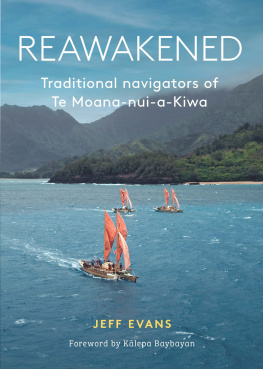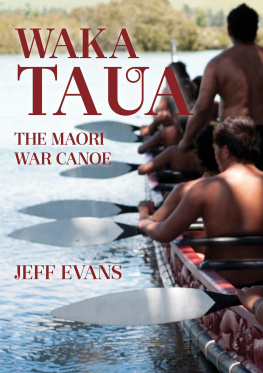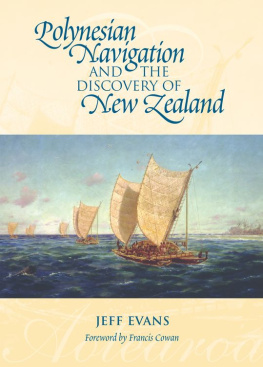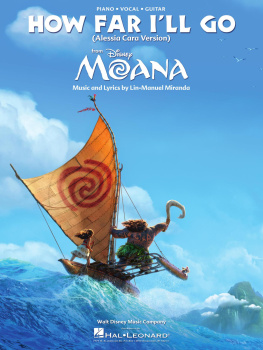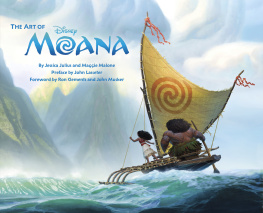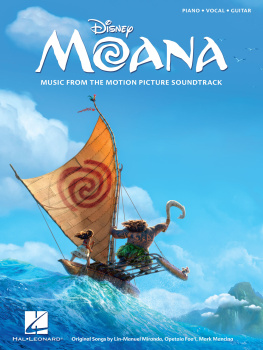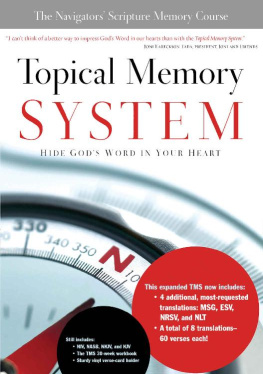Jeff Evans - Reawakened : traditional navigators of Te Moana-nui-a-Kiwa
Here you can read online Jeff Evans - Reawakened : traditional navigators of Te Moana-nui-a-Kiwa full text of the book (entire story) in english for free. Download pdf and epub, get meaning, cover and reviews about this ebook. year: 2021, publisher: Massey University Press, genre: Home and family. Description of the work, (preface) as well as reviews are available. Best literature library LitArk.com created for fans of good reading and offers a wide selection of genres:
Romance novel
Science fiction
Adventure
Detective
Science
History
Home and family
Prose
Art
Politics
Computer
Non-fiction
Religion
Business
Children
Humor
Choose a favorite category and find really read worthwhile books. Enjoy immersion in the world of imagination, feel the emotions of the characters or learn something new for yourself, make an fascinating discovery.
- Book:Reawakened : traditional navigators of Te Moana-nui-a-Kiwa
- Author:
- Publisher:Massey University Press
- Genre:
- Year:2021
- Rating:5 / 5
- Favourites:Add to favourites
- Your mark:
- 100
- 1
- 2
- 3
- 4
- 5
Reawakened : traditional navigators of Te Moana-nui-a-Kiwa: summary, description and annotation
We offer to read an annotation, description, summary or preface (depends on what the author of the book "Reawakened : traditional navigators of Te Moana-nui-a-Kiwa" wrote himself). If you haven't found the necessary information about the book — write in the comments, we will try to find it.
Jeff Evans: author's other books
Who wrote Reawakened : traditional navigators of Te Moana-nui-a-Kiwa? Find out the surname, the name of the author of the book and a list of all author's works by series.
Reawakened : traditional navigators of Te Moana-nui-a-Kiwa — read online for free the complete book (whole text) full work
Below is the text of the book, divided by pages. System saving the place of the last page read, allows you to conveniently read the book "Reawakened : traditional navigators of Te Moana-nui-a-Kiwa" online for free, without having to search again every time where you left off. Put a bookmark, and you can go to the page where you finished reading at any time.
Font size:
Interval:
Bookmark:
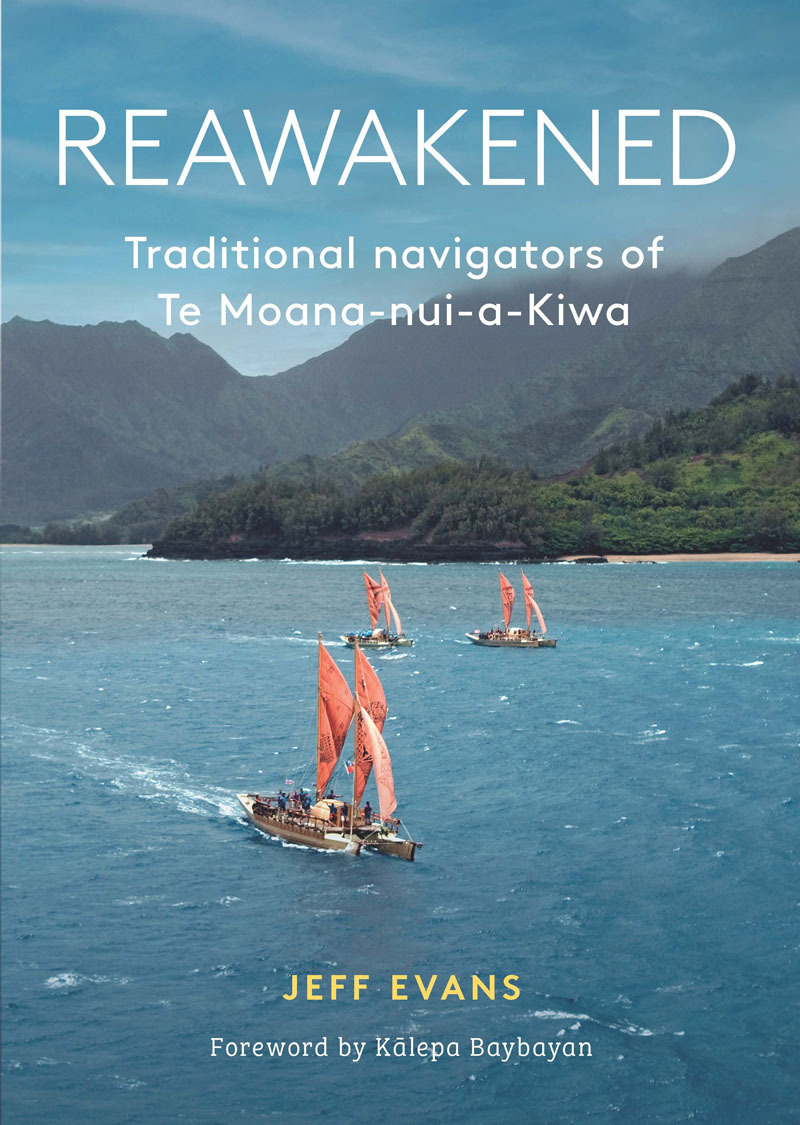


Year after year he came and took us by the hand. He cares about people, about tradition; he has vision. His impact will be carried beyond himself. His teaching becomes his legacy, and he will not soon be forgotten.
Nainoa Thompson, Reflections on Mau, 1997


Pwo ceremony on Satawal atoll, 2007.
JAMES KIMO HUGHO/POLYNESIANVOYAGINGART.COM
S eated on plaited mats under the thatched roof of a traditional canoe house, 16 men 11 from the tiny atoll of Satawal in the Caroline Islands and five from Hawai`i are gathered in a circle. In the centre of the circle are the tools to be used in a spiritual initiation ceremony: pieces of coral, a woven bracelet, bird feathers, special leaves from selected trees, a bowl of food and several coconuts.
For 3000 years oceanic navigators have recognised their most experienced mariners from the tiny atolls of Micronesia by initiating them into the Order of Pwo to become palu, oceanic wayfinders. The ceremony is being conducted by our teacher, Master Navigator Mau Piailug, the last surviving navigator on Satawal atoll. The spiritual process is laden with cultural protocol, song, dance, prayer, reverence and celebration. Students participating in the ceremony recite star directions to distant neighbouring atolls to test their competency.
The ceremony lasts for three days. On the final night at around 1 a.m., when the navigation stars are high in the sky, the initiates participate in navigation school taught by Master Mau. In the lamplit darkness of the canoe house, he chants the sailing directions to distant atolls, their respective courses, and the guiding stars that lead to land. Mau is occasionally respectfully interrupted by the Satawalese students asking for clarification and confirmation of specific instructions. Volumes of knowledge, all conveyed orally, are stored in Maus immense memory vault.
The final lesson shared with the new palu is Maus explanation of the purpose of Pwo. He says that receiving Pwo is to be a light to your community, to provide leadership and command on the canoe, to be a good steward of people and your culture, to provide nourishment to the islanders, and to protect and serve the island by being a resource that they can rely on.
In the morning we walk to the beach as Pwo and welcome the rising sun.
I first met Mau Piailug some 31 years earlier, in April of 1976. He had been recruited by the Polynesian Voyaging Society (PVS) to participate in an experiment in archaeology: he would navigate a design-accurate replica of a traditional Polynesian double-hulled voyaging canoe or wa`a, Hkle`a, through 37 degrees of latitude to Tahiti on a southsoutheast route, completely without instruments, guided only by stars (see ).
I caught glimpses of Mau as the wa`a spent a week at Honolua Bay, Maui, where her crew were loading food and water and making final preparations for their voyage to Tahiti. Just prior to their departure they assembled for an `awa ceremony, a modern-day Hawaiian ritual regularly practised in Pacific Island cultures. Mau gave a final address to the crew, with Mike McCoy (a Peace Corps volunteer who had married into Maus family) translating for him. I had never heard a speech of such eloquence, clarity and authority.
Mau told the crew that the time had arrived for them to put the things of land away and to accept this new canoe family, and he encouraged them to place their trust in the canoes captain and navigator. The trip, he said, would be difficult and challenging to a group unfamiliar with the discipline required to live on a small, open-decked canoe for over 30 days, and that they would struggle. He spoke with a quiet, disarming demeanour, and just by listening to him you could tell that he was a seasoned oceanic leader.
Despite the success of the navigation experiment and of the vessels seaworthiness, there were human failures in the social nature of the project. Little thought had been given to the crews ability to live and work together harmoniously during the voyage. Just days before their arrival in Tahiti, tensions boiled over into a physical confrontation. Bitterly disappointed, Mau abandoned the project in Tahiti, refusing to navigate the canoe back to Hawai`i; instead, the voyage was completed with sextant and compass.
A mong the crew for the return trip to Hawai`i was a 23-year-old Hawaiian, Nainoa Thompson, who served as a watch captain. He was curious about Maus navigation system, and he regretted Maus departure and the lost opportunity to learn from the master navigator. On the voyage home Nainoa filled his notebooks with observations about the night sky, the weather, the sea state, and the daily position of the sun. Once back in Hawai`i, he continued his university studies with a renewed vigour, taking on a liberal studies degree with the intention of re-engineering the art of non-instrument navigation. He studied meteorology, astronomy and oceanography, and over the next four years he designed a system of non-instrument navigation based on mathematics and science.
In 1978 the PVS attempted to sail Hkle`a back to Tahiti to test Nainoas theory. But within hours of departure from O`ahu the canoe capsized in bad weather and crew member Eddie Aikau was lost in a failed rescue attempt.
The PVS went ahead with plans to repair the canoe and make the vessel safer. Meanwhile, Nainoa continued with his studies, and eventually he proposed another attempt to voyage back to Tahiti on board a rebuilt Hkle`a, scheduled for 1980. However, he was troubled about the mental and spiritual challenges of such an endeavour. His father made a suggestion: go and find Mau and invite him back to Hawai`i. Nainoa followed his fathers advice and located Mau; he invited him to Hawai`i to help him complete his training and prepare for the voyage.
Mau, though, was non-committal. Months passed, then Nainoa received a phone call from a customs agent at Honolulu International Airport. The agent said that he had a Mr Mau Piailug there with him, and he requested that Nainoa come and pick him up. Mau told Nainoa that he had come to Hawai`i to help train him in navigation and to teach him how to sail so that the crew would be safe at sea, but he did not intend to sail with the crew. Mau became Nainoas mentor and that was when I became reacquainted with him.
Nainoas training began far from the traditional four-walled classroom. It took place in the environment that had provided Mau with the tools that made him a competent navigator and sailor: in the wind and the sea, standing on the deck of a vessel as the ocean rises up under your feet. In this environment both Mau and Nainoa were completely at home. Their routine involved watching the sun rise and set on the coastline, learning how to read weather in the clouds, studying the sea swells, their direction and the underlying current from Nainoas fishing boat, as well as observing the night sky and familiarising Nainoa with the star path to Tahiti.
Nainoas mathsscience system and Maus oceanic wayfinding system, passed from generation to generation on an island that still lives a traditional lifestyle, are remarkably alike. Nainoa explains that his system makes Maus traditional wayfinding understandable to him. Nainoas re-engineered system of non-instrument navigation is grounded in science and the academic principles learnt through the study of meteorology, maths, astronomy and oceanography. It is a robust system, laden with memorised information and data. What it lacks, however, is a sense of spirituality, something that connects him to his oceanic roots. That is what Mau brings to Nainoas training a sense of the navigators spirit that resonates deep inside and can help the navigator endure the sleepless nights and work through those hard episodes of fatigue and no university course can teach that.
Next pageFont size:
Interval:
Bookmark:
Similar books «Reawakened : traditional navigators of Te Moana-nui-a-Kiwa»
Look at similar books to Reawakened : traditional navigators of Te Moana-nui-a-Kiwa. We have selected literature similar in name and meaning in the hope of providing readers with more options to find new, interesting, not yet read works.
Discussion, reviews of the book Reawakened : traditional navigators of Te Moana-nui-a-Kiwa and just readers' own opinions. Leave your comments, write what you think about the work, its meaning or the main characters. Specify what exactly you liked and what you didn't like, and why you think so.

